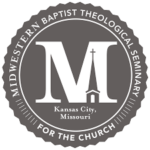
Pastors and teachers, with Paul, I “charge you in the presence of God and of Christ Jesus, who is to judge the living and the dead, and by his appearing and his kingdom: preach the word” (2 Tim. 4:1–2). And when you do, don’t forget the Old Testament—the “sacred writings” and “Scripture” Paul had in mind when he wrote 2 Timothy 3:15–17 and the “word” he commanded Timothy to preach.
If we’re convinced that Jesus’s only Bible is still important for Christians, how should we think about the intimidating task of preaching from the Old Testament? Here are seven tips for aspiring Old Testament preachers.
1. Approach the Old Testament as Christian Scripture that God wrote to instruct us.
What we call “the Old Testament” was the only Scripture Jesus had, and the apostles stressed that the ancient prophets wrote God’s Word for instructing Christians.
Why did Moses record events like God’s guiding and protecting Israel through the wilderness and Red Sea? Paul says, “Now these things happened to them as an example, but they were written down for our instruction, on whom the end of the ages has come” (1 Cor. 10:11).
Regarding David’s psalms and all the other prophetic writings of his Bible, Paul also emphasized, “For whatever was written in former days was written for our instruction, that through endurance and through the encouragement of the Scriptures we might have hope” (Rom. 15:4; cf. v. 3). Similarly, Peter emphasized that “it was revealed to [the Old Testament prophets] that they were serving not themselves but you”––the Christian church (1 Pet. 1:12).
When Moses wrote Deuteronomy, he was writing for Christians (Deut. 30:8).
When Isaiah and Jeremiah wrote their prophecies, they were writing for Christians (Isa. 29:18; 30:8; Jer. 30:1–2, 25; 31:1, 33).
When Daniel finalized his book, he knew that only those we now call Christians would fully grasp the import of all he was writing (Dan. 12:5–10).
The Old Testament is Christian Scripture that God wrote to instruct us. These “sacred writings . . . are able to make you wise for salvation through faith in Christ Jesus,” and it is this “Scripture” that “is breathed out by God and profitable for teaching, for reproof, for correction, and for training in righteousness” (2 Tim. 3:15–17).
Old in Old Testament doesn’t mean unimportant, and we should approach the text accordingly.
2. Interpret the Old Testament with the same care you would the New Testament.
We must do this because it was Jesus’s only Bible, because in it we meet the same God (Heb. 1:1), and because Jesus said it was about him and his mission that he’s now carrying out through his church (Luke 24:45–47; cf. 24:26–27, 44; John 5:39, 46; Acts 3:18, 25; 26:22–23).
Theologically, to give the same care to the Old Testament as to the New means we treat the initial three-fourths of the Christian Scripture as the Word of God for us (Mark 7:13; 12:36), which Jesus considered authoritative (Matt. 4:3–4, 7, 10; 23:1–3), believed couldn’t be broken (John 10:35), and called people to know and trust so as to guard against doctrinal error and hell (Mark 12:24; Luke 16:28–31; 24:25; John 5:46–47).
Methodologically, caring for the Old Testament as we do the New means that with every passage we must consider genre, literary boundaries, grammar, translation, structure, argument flow, key words and concepts, historical and literary context, and biblical, systematic, and practical theology. God chose to disclose himself and his will by words in literature, so we must engage in God-dependent wrestling of each passage within its given book and place in redemptive history, and also in relationship to Christ.
So many Christian preachers will give years to Romans and only 12 weeks to the Minor Prophets. They take great care in assessing the message and lasting relevance of Mark’s Gospel but only dabble in Genesis, Psalms, or Isaiah, while rarely even touching the other books. When others take account of your ministry, may such realities not be said of you.
We must seek to faithfully proclaim “the whole counsel of God” (Acts 20:27) as disclosed from Genesis to Revelation and to do so in a way that God approves, because you rightly handle “the word of truth” (2 Tim. 2:15).
3. Treat properly the testamental nature of the Old Testament.
The early church fathers designated the two parts of the Christian Bible the Old and New Testament because they rightly saw that each addressed principally the old and new covenants, respectively. We call Jesus’s Bible a testament because of its covenantal quality, which links it to a specific era in redemptive history––an era before Christ. The Old Testament substantially addresses how God establishes and enforces his Mosaic covenant. And unlike the New Testament that was written in the common language of Greek and initially targeted at a multi-national church, the Old Testament was written to Hebrews in Hebrew, and it contains peoples, places, and powers from a different period in redemptive history.
The Old Testament bears a historical particularity that requires Christian preachers to observe carefully, understand rightly, and evaluate fairly what is there before building a bridge to Christian application and the church. For Christian preachers to engage the Old Testament as a testament requires that they identify the distinctive covenantal elements in the text and then consider how the coming of Christ influences the instructive nature of every passage.
4. Remember the Old Testament is Old.
The Old Testament addresses an era before Christ and details a covenant of which Christians aren’t a part and that’s been superseded by the new. This fact requires that Christians carefully consider how Christ fulfills every Old Testament story, promise, and law before establishing their lasting relevance.
The Old Testament ends demanding a sequel, demanding resolution. Jesus’s Bible creates problems that he alone solves. The Old Testament provides foundation for all that he and the New Testament build. We no longer live directly under the old covenant (Luke 16:16; Gal. 3:24–26), for “in speaking of a new covenant, he makes the first one obsolete” (Heb. 8:13; cf. v. 6). While Moses’s instructions still have lasting value for Christians, they do so only in light of the way Jesus fulfills the law and through his mediation (Deut. 30:8; Matt. 5:17–19; 1 Cor. 9:20–21). Similarly, while every promise is “Yes” for Christians, it is so only in Christ (2 Cor. 1:20).
We ought not preach the Old Testament to Christians without mediating it through the lens of Jesus, whose blood-bought grace allowed God to even justly give his Word to sinners. Jesus’s person and work realize what the Old Testament anticipates (Matt. 5:17–18; Luke 24:44; Acts 3:18), and Christ is the substance of all Old Testament shadows (Col. 2:16–17). Every promise is Yes in Christ (2 Cor. 1:20), and he embodies every ethical ideal both the law and wisdom call for (Rom. 5:18–19).
We must read the Old Testament recognizing that one of its fundamental purposes is to help us celebrate the Christ and all God would accomplish through the new covenant.
5. Read the Old Testament through the light and lens of Christ.
By light I mean that a proper reading of the Old Testament is only possible for the regenerate––those who have seen “the light of the gospel of the glory of Christ” (2 Cor. 3:4). By lens I’m stressing how Jesus’s life, death, and resurrection revealed truths in the Old Testament itself that were always there but not yet clear. We must recognize significant continuities between the Testaments, such that many prophets, kings, and righteous people saw Christ from a distance and longed for him (e.g., Matt. 13:17; Luke 10:24; John 8:56; cf. Heb. 11:13). Thus, Peter could tell us that
the prophets who prophesied about the grace that was to be yours searched and inquired carefully, inquiring what person or time the Spirit of Christ in them was indicating when he predicted the sufferings of Christ and the subsequent glories. It was revealed to them that they were serving not themselves but you. (1 Pet. 1:10–12)
On the other hand, there were significant discontinuities, in that the rebel population wasn’t given eyes to see and ears to hear the Old Testament message (Deut. 29:3–4; Isa. 6:9–10; 44:18; 29:10–11), and God didn’t fully disclose all of his meaning to the remnant until Christ came and revealed the mystery of the kingdom (Jer. 30:24; Dan. 12:8–10; cf. Mark 4:11–12).
The New Testament authors identify how, once seeing the risen Christ, they never read their Bibles the same way again (cf. John 2:20–22; 12:13–16). They also highlight how the coming of Christ discloses the “mystery” of the Old Testament (Rom. 16:25–26) and removes the “veil” that allows us to read the full meaning of what’s actually there (2 Cor. 3:14).
The New Testament provides both the answer key and also the algorithm for reading the Old Testament in its fullness. In many ways the Old Testament sets a pattern of 2 . . . 4, but it’s the New that clarifies whether the next digit is 6 or 8 and therefore identifies whether we’re to see the relationship of 2 and 4 as addition or multiplication. We must read the Old Testament through the light and lens of Christ.
6. Consider how to faithfully see and celebrate Christ in the Old Testament.
Here we must employ the discipline of biblical theology, which seeks to analyze and synthesize how the whole Bible progresses, integrates, and climaxes in Christ. We can see and celebrate Christ in numerous ways, depending on the Old Testament text. Here are seven.
- We can identify how Christ fulfills direct messianic predictions. YHWH promises, “I will set up over them one shepherd, my servant David, and he shall feed them: he shall feed them and be their shepherd” (Ezek. 34:23)—which Jesus directly claims to fulfill (John 10:11, 16).
- We can consider how Christ stands as the goal and climax of the redemptive story and all salvation-historical trajectories. Five major covenants (Adamic-Noahic, Abrahamic, Mosaic, Davidic, and new) guide the plot line of Scripture and find their terminus in Christ.
- We can recognize how Christ’s coming creates numerous similarities and contrasts between the old and new ages, creations, and covenants. For example, both covenants show a pattern of gracious redemption giving rise to gracious law-giving. As for contrasts, whereas access to YHWH’s presence in the temple was restricted to the high priest on the Day of Atonement, Christ’s priestly work opens the way for all in him to enjoy God’s presence (Heb. 9:24–26; 10:19–22).
- We can determine how Old Testament characters (e.g., Adam, Melchizedek, Moses, David), events (e.g., the flood, the exodus, the return to the land), and institutions or objects (e.g., the Passover lamb, the temple, the priesthood) clarify and anticipate Christ’s person and work.
- We can reflect on how who Yahweh is and what he does reveals the identity and activity of the divine Son. When we hear Yahweh speaking and acting in the Old Testament, we are seeing the very One who would embody himself in the person of Jesus.
- We can contemplate how Christ embodies every ethical ideal from law or wisdom and how his righteousness is then imputed to all in him by faith.
- We can use the Old Testament to instruct or guide others through Christ’s mediation—both through the pardon he supplies, which secures both promises and power, and the pattern of instruction and godliness he sets.
7. When preaching from the New Testament, take time to consider how the authors are using their Bibles, whether through Old Testament allusion or citation.
The early church devoted themselves to the apostles’ teaching (Acts 2:42), and the whole church is built on the foundation of the apostles and prophets, with Jesus as the cornerstone (Eph. 2:20). The apostles themselves were preaching with their Bibles open––our Old Testament—and were making much of Christ. “From morning till evening [Paul] expounded to [those in Rome], testifying to the kingdom of God and trying to convince them about Jesus both from the Law of Moses and from the Prophets” (Acts 28:23). The New Testament is loaded with citations, allusions, and echoes of the Old Testament, and we need to help our people see them and note their significance.
When Paul asserted to the Corinthians, “I decided to know nothing among you except Jesus Christ and him crucified” (1 Cor. 2:2), he did so as an Old Testament preacher. And when he claimed that all Scripture . . . is profitable” (2 Tim. 3:16) and commanded Timothy to “preach the word” (4:2), the “Scripture” and “word” he principally had in mind was the Old Testament. You will help yourself and your people to cherish the whole counsel of God (Acts 20:27) and to read the whole Bible as Christian Scripture when you take time to wrestle with how the New Testament uses the Old.
So how can Christian preachers faithfully approach the Old Testament? Through the light and lens of Christ, preachers can proclaim the same God and the same good news in both Testaments, rejoicing in both the continuities and also discontinuities of God’s perfect plan progressing through Scripture’s storyline.
The Old Testament was written for us, so let’s feed people like we believe that!
This post originally appeared at The Gospel Coalition. For the podcast that overviews this same material, look here.






